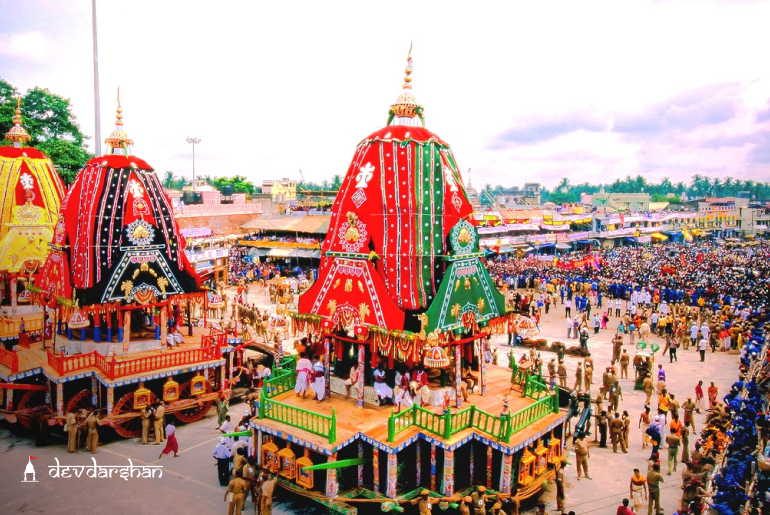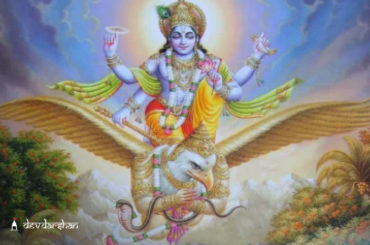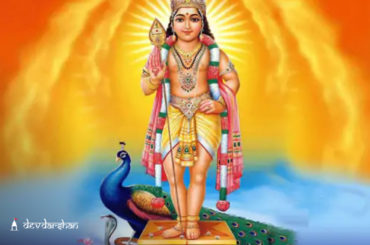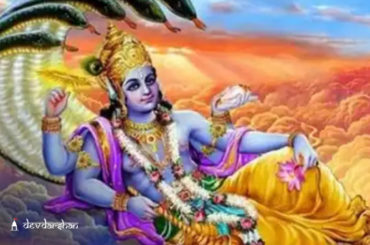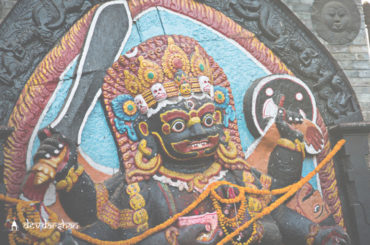Jagannath Ratha Yatra: Chariots Roll, Hearts Rejoice!
Jagannath Ratha Yatra, also known as the Chariot Festival of Lord Jagannath, is a major Hindu festival celebrated in Puri, Odisha, India. It is one of the most significant and oldest religious processions in the country.
The festival commemorates Lord Jagannath, an incarnation of Lord Krishna, along with his siblings, Lord Balabhadra (Balarama) and Devi Subhadra, embarking on a journey from the main temple, Shri Jagannath Temple, to the Gundicha Temple, situated about 3 kilometers away. The deities are placed on lavishly decorated wooden chariots, which are pulled by thousands of devotees through the streets of Puri.
The event especially takes place in the month of June or July. It attracts millions of devotees and tourists from all over India and abroad. It is a time of great joy and devotion, as people chant hymns, sing devotional songs, and participate in the grand procession. The atmosphere is filled with religious fervor, colors, music, and dance.
Also Find: Unknown Facts about Jagannath Rath Yatra
So, let’s get to know more about the Date, Rituals and Significance of Jagannath Ratha Yatra 2023.
Jagannath Ratha Yatra 2023: Date, Muhurat and Timings
This year, Jagannath Ratha Yatra will be celebrated on Tuesday, June 20, 2023
- Dwitiya Tithi Starts: 11:25 a.m on June 19, 2023
- Dwitiya Tithi Ends: 01:07 PM on June 20, 2023
Find Out Date and Muhurat of Devshayani Ekadashi 2023
Significance of Jagannath Ratha Yatra 2023
The Ratha Yatra is symbolic of Lord Jagannath’s annual visit to his birthplace, the Gundicha Temple. The journey represents the divine siblings’ love and compassion for their devotees, who eagerly await their arrival and seek their blessings.
The festival typically takes place on the second day of Shukla Paksha of the month of Asadh according to the Hindu calendar and spans for several days. The chariots used for the procession are enormous and are built anew each year. The three chariots, named Nandighosa (for Lord Jagannath), Taladhwaja (for Lord Balabhadra), and Darpadalan (for Devi Subhadra), are beautifully adorned with colorful fabrics, flowers, and artwork.
Jagannath Ratha Yatra holds immense religious and cultural significance, promoting unity, devotion, and spiritual upliftment among its participants. It is a time when people come together to celebrate the divine grace and experience a profound connection with Lord Jagannath and his divine siblings.
How to Worship Lord Jagannath on Ratha Yatra Festival?
Indeed, the period from Ashadh Shukla Dwitiya to Dashami is considered highly auspicious and spiritually significant. It is during this time that Lord Jagannath graciously dwells among the general public, making worship and prayers to Him even more fruitful.
- Participating in the Rath Yatra, the grand procession of Lord Jagannath is a wonderful way to engage in His divine presence. If joining the main Rath Yatra is not feasible, you can explore the option of participating in any other Rath Yatra held in different locations. These processions carry the spirit of devotion and provide an opportunity to connect with Lord Jagannath.
- In case attending a Rath Yatra is not possible, you can still worship Lord Jagannath from the comfort of your home. Create a sacred space for His deity form, offer your sincere prayers, and perform rituals with devotion. Offering Malpua, a sweet delicacy, as prasad (divine food offering) to Lord Jagannath is a beautiful gesture of love and reverence.
- While worshiping, chant the mantras dedicated to Lord Jagannath. Reciting His holy names and hymns invokes His divine presence and bring blessings into your life. Engage in deep devotion and surrender to Lord Jagannath, experiencing His divine grace.
- Remember, the essence of any spiritual practice lies in the purity of heart, devotion, and sincerity of intention. Whether you participate in the grand Rath Yatra, join a local procession, or worship at home, the most important aspect is the connection you establish with Lord Jagannath and the depth of your devotion towards Him.
Lord Jagannath is worshipped by performing Lord Vishnu Puja
Find out how to perform Lord Vishnu Puja
History Behind Jagannath Ratha Yatra 2023
The history of Jagannath Ratha Yatra is rooted in ancient Hindu scriptures and mythology. According to Hindu mythology, Lord Jagannath is considered an incarnation of Lord Krishna, and the Ratha Yatra has its origins in the age-old tradition associated with Lord Krishna’s Vrindavan pastimes.
The specific history of the Jagannath Ratha Yatra in Puri, Odisha, can be traced back several centuries. The Jagannath Temple in Puri, dedicated to Lord Jagannath, has been an important pilgrimage site for Hindus since ancient times. The temple was established in its current form during the 12th century under the patronage of the Ganga dynasty.
The story behind the Ratha Yatra festival is associated with a divine play called the Nabakalebara’. Nabakalebara translates to ‘new embodiment’ or ‘new manifestation’ and refers to the ritualistic change of the wooden deities of Lord Jagannath, Lord Balabhadra, Devi Subhadra, and Sudarshana Chakra (a divine disc) every 12 to 19 years.
During Nabakalebara, new wooden idols are carved out of a sacred neem tree. The old idols are replaced with the new ones in a grand ceremony. This process involves several elaborate rituals and is considered highly sacred and significant.
The Ratha Yatra takes place following the Nabakalebara ceremony. It is believed that Lord Jagannath himself desires to visit his birthplace, the Gundicha Temple, and spend some time there. The deities are taken out of the main temple and placed on specially constructed chariots for the journey.
The chariots are built anew each year using specific types of wood and are beautifully decorated. The procession begins from the Jagannath Temple and covers a distance of about 3 kilometers to reach the Gundicha Temple. Thousands of devotees gather to pull the chariots using ropes, considering it an act of great devotion and fortune.
The Ratha Yatra is a time when people from all walks of life come together to witness and participate in the divine journey. It is believed that even a glimpse of the deities during the procession can bestow immense blessings and liberation.
The festival has witnessed various historical incidents, including invasions and reconstructions of the Jagannath Temple, but it has managed to endure and retain its significance over the centuries. Today, the Jagannath Ratha Yatra in Puri is renowned worldwide and continues to be celebrated with great enthusiasm and devotion by millions of people.
Legends Behind Jagannath Rath Yatra 2023
There are several mythological legends behind Jagannath Rath Yatra. Let’s see about them in detail.
King Kansa Legend
Once upon a time, Krishna’s maternal uncle, Kansa, harboured a dark desire to harm Krishna and his brother Balarama. Craftily, Kansa invited them to Mathura, disguising his true intentions. To facilitate their journey, Kansa sent his charioteer, Akrura, to Gokul.
When Akrura arrived in Gokul, Lord Krishna and Balarama were informed of Kansa’s invitation. Without hesitation, Krishna and Balarama climbed onto the chariot, ready to embark on their journey to Mathura. This momentous occasion of their departure from Gokul to Mathura is celebrated as Rath Yatra by devoted followers.
In another instance, the residents of Dwarka commemorate the day when Lord Krishna, accompanied by Balarama, magnificently showcased the grandeur of their city. They took Krishna’s sister, Subhadra, along in a chariot, allowing the citizens to witness the resplendence and majesty of Dwarka.
Also, Read about Janmasthmi – The Birth of Lord Krishna
Legend of Raas Leela
In another legend, the queens of Lord Krishna approached Devi Rohini with a request. They yearned to hear the enchanting stories of Lord Krishna’s romantic escapades, known as the Raas Leela, with the gopis. However, considering it inappropriate for Subhadra, Rohini sent her away from the gathering.
Unbeknownst to Rohini, Subhadra discreetly lingered near Lord Krishna and Balarama, who were absorbed in the enthralling tales. As the stories unfolded, Narada, the celestial sage, happened upon the scene. He beheld the divine sight of the siblings standing together and fervently prayed for their eternal presence in that divine form.
Moved by Narada’s prayer and the love shared between the three, Lord Krishna granted them a divine boon. From that moment onward, it was ordained that the three – Lord Krishna, Balarama, and Subhadra – would eternally reside together in the sacred temple of Lord Jagannatha in Puri, symbolizing their eternal bond.
Thus, the divine presence of Lord Krishna, Balarama, and Subhadra continues to grace the revered temple in Puri, captivating the hearts and devotion of countless devotees.
Cremation Of Lord Krishna’s Mortal Remains
Lastly, the story of Lord Krishna’s cremation. After the cremation of Lord Krishna’s mortal body in Dwarka, a profound event unfolded. Overwhelmed with grief, Balarama, filled with sadness, hurriedly made his way towards the sea, intending to drown himself along with the partially cremated body of Krishna. Subhadra, his sister, followed closely behind him, unwilling to let go.
Meanwhile, on the eastern coast of India, King Indradyumna of Jagannath Puri had a prophetic dream. In his dream, he saw Lord Krishna’s divine body floating toward the shores of Puri. The king was instructed to construct a grand idol in the city and sanctify it with the wooden idols of Krishna, Balarama, and Subhadra. Furthermore, he was instructed to place the ashes of Lord Krishna in the hollow of the idol. The dream held the promise of reality.
Filled with faith and determination, King Indradyumna embarked on the task. He discovered the remains of the ashes (bones) and carried them reverently with him. However, a crucial question arose—who would be skilled enough to carve the sacred idols?
As destiny would have it, the divine architect of the gods, Vishwakarma, appeared in the disguise of an elderly carpenter. He laid down a condition that no one should disturb him during the process of carving the idols. He warned that if anyone were to violate this condition, he would immediately vanish, leaving the work incomplete.
Months passed, and the idols gradually took shape under Vishwakarma’s skillful hands. The king anxiously awaited their completion. However, consumed by impatience, Indradyumna could no longer resist the temptation and impulsively opened the door to Vishwakarma’s chamber. True to his warning, the divine carpenter disappeared in an instant.
Despite the idols being unfinished, King Indradyumna sanctified them as instructed. He placed the sacred ashes of Lord Krishna within the hollow of the idol and established it within the temple. Since that momentous occasion, a majestic procession known as the Ratha Yatra has been observed annually.
During the Ratha Yatra, three colossal chariots are pulled by devoted followers from Janakpur to the Jagannath Puri temple. These chariots bear the magnificent idols of Lord Krishna, Balarama, and Subhadra. It is a grand spectacle where devotees participate with immense enthusiasm and reverence.
It is a tradition to replace the idols every 12 years, continuing the legacy of the incomplete carvings as established by Vishwakarma. The unfinished state of the idols serves as a reminder of their divine origin and the eternal bond between Lord Krishna, Balarama, and Subhadra.
Check out various Online Puja and services provided by DevDarshan here and get your bookings done in one click. If you want to know more about Indian culture, Indian Temples, Pujas and festivals, then download the DevDarshan App. Don’t forget to share this blog if you liked.

